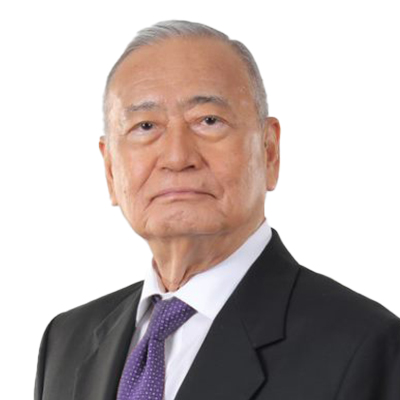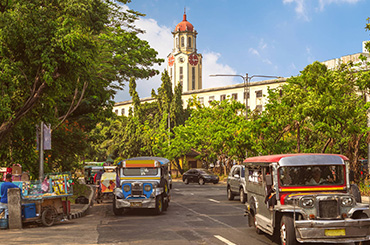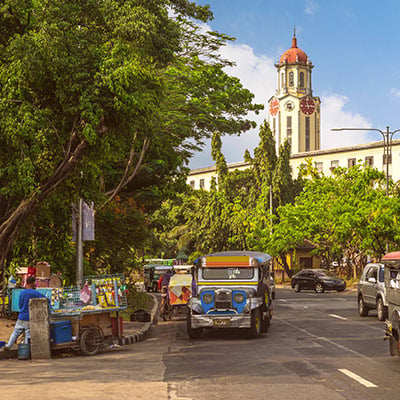-
Audit approach overview
Our audit approach will allow our client's accounting personnel to make the maximum contribution to the audit effort without compromising their ongoing responsibilities
-
Annual and short period audit
At P&A Grant Thornton, we provide annual and short period financial statement audit services that go beyond the normal expectations of our clients. We believe strongly that our best work comes from combining outstanding technical expertise, knowledge and ability with exceptional client-focused service.
-
Review engagement
A review involves limited investigation with a narrower scope than an audit, and is undertaken for the purpose of providing limited assurance that the management’s representations are in accordance with identified financial reporting standards. Our professionals recognize that in order to conduct a quality financial statement review, it is important to look beyond the accounting entries to the underlying activities and operations that give rise to them.
-
Other Related Services
We make it a point to keep our clients abreast of the developments and updates relating to the growing complexities in the accounting world. We offer seminars and trainings on audit- and tax-related matters, such as updates on Accounting Standards, new pronouncements and Bureau of Internal Revenue (BIR) issuances, as well as other developments that affect our clients’ businesses.
-
Tax advisory
With our knowledge of tax laws and audit procedures, we help safeguard the substantive and procedural rights of taxpayers and prevent unwarranted assessments.
-
Tax compliance
We aim to minimize the impact of taxation, enabling you to maximize your potential savings and to expand your business.
-
Corporate services
For clients that want to do business in the Philippines, we assist in determining the appropriate and tax-efficient operating business or investment vehicle and structure to address the objectives of the investor, as well as related incorporation issues.
-
Tax education and advocacy
Our advocacy work focuses on clarifying the interpretation of laws and regulations, suggesting measures to increasingly ease tax compliance, and protecting taxpayer’s rights.
-
Business risk services
Our business risk services cover a wide range of solutions that assist you in identifying, addressing and monitoring risks in your business. Such solutions include external quality assessments of your Internal Audit activities' conformance with standards as well as evaluating its readiness for such an external assessment.
-
Business consulting services
Our business consulting services are aimed at addressing concerns in your operations, processes and systems. Using our extensive knowledge of various industries, we can take a close look at your business processes as we create solutions that can help you mitigate risks to meet your objectives, promote efficiency, and beef up controls.
-
Transaction services
Transaction advisory includes all of our services specifically directed at assisting in investment, mergers and acquisitions, and financing transactions between and among businesses, lenders and governments. Such services include, among others, due diligence reviews, project feasibility studies, financial modelling, model audits and valuation.
-
Forensic advisory
Our forensic advisory services include assessing your vulnerability to fraud and identifying fraud risk factors, and recommending practical solutions to eliminate the gaps. We also provide investigative services to detect and quantify fraud and corruption and to trace assets and data that may have been lost in a fraud event.
-
Cyber advisory
Our focus is to help you identify and manage the cyber risks you might be facing within your organization. Our team can provide detailed, actionable insight that incorporates industry best practices and standards to strengthen your cybersecurity position and help you make informed decisions.
-
ProActive Hotline
Providing support in preventing and detecting fraud by creating a safe and secure whistleblowing system to promote integrity and honesty in the organisation.
-
Accounting services
At P&A Grant Thornton, we handle accounting services for several companies from a wide range of industries. Our approach is highly flexible. You may opt to outsource all your accounting functions, or pass on to us choice activities.
-
Staff augmentation services
We offer Staff Augmentation services where our staff, under the direction and supervision of the company’s officers, perform accounting and accounting-related work.
-
Payroll Processing
Payroll processing services are provided by P&A Grant Thornton Outsourcing Inc. More and more companies are beginning to realize the benefits of outsourcing their noncore activities, and the first to be outsourced is usually the payroll function. Payroll is easy to carve out from the rest of the business since it is usually independent of the other activities or functions within the Accounting Department.
-
Our values
Grant Thornton prides itself on being a values-driven organisation and we have more than 38,500 people in over 130 countries who are passionately committed to these values.
-
Global culture
Our people tell us that our global culture is one of the biggest attractions of a career with Grant Thornton.
-
Learning & development
At Grant Thornton we believe learning and development opportunities allow you to perform at your best every day. And when you are at your best, we are the best at serving our clients
-
Global talent mobility
One of the biggest attractions of a career with Grant Thornton is the opportunity to work on cross-border projects all over the world.
-
Diversity
Diversity helps us meet the demands of a changing world. We value the fact that our people come from all walks of life and that this diversity of experience and perspective makes our organisation stronger as a result.
-
In the community
Many Grant Thornton member firms provide a range of inspirational and generous services to the communities they serve.
-
Behind the Numbers: People of P&A Grant Thornton
Discover the inspiring stories of the individuals who make up our vibrant community. From seasoned veterans to fresh faces, the Purple Tribe is a diverse team united by a shared passion.
-
Fresh Graduates
Fresh Graduates
-
Students
Whether you are starting your career as a graduate or school leaver, P&A Grant Thornton can give you a flying start. We are ambitious. Take the fact that we’re the world’s fastest-growing global accountancy organisation. For our people, that means access to a global organisation and the chance to collaborate with more than 40,000 colleagues around the world. And potentially work in different countries and experience other cultures.
-
Experienced hires
P&A Grant Thornton offers something you can't find anywhere else. This is the opportunity to develop your ideas and thinking while having your efforts recognised from day one. We value the skills and knowledge you bring to Grant Thornton as an experienced professional and look forward to supporting you as you grow you career with our organisation.
(Part 1)
There have been continuing commentaries on how bad our agricultural sector, particularly rice farming, has been for a long time now. Sadly, there appears to be no clear dramatic improvement in sight. For this reason, I thought I would try to get an understanding of the current characteristics of the two major factors in rice production— the rice farmers and their farmland.
I have been able to obtain some relevant information through the internet which I am using in this commentary. These are: Factsheet: Resilience Solutions for the Rice Sector in the Philippines which forms part of the Private Markets Resilience Project for selected emerging markets countries published in June 2020 by a group of non-government entities, namely, Nordic Development Fund, Inter-American Development Bank, Grupo Laera and Oscar M. Lopez Center (Factsheet); The Philippine Rice Industry Road Map - 2030, published by the Department of Agriculture in September 2018 (Road Map); and Press Releases by the Philippine Statistics Authority (PSA) in December 2024 and January 2025 relating to its Census of Agriculture and Fisheries conducted in 2022 (Census). The Census has much broader coverage as it combines the whole agriculture sector, consisting of all crops and livestock and poultry.
The Factsheet indicates that rice is the staple food for about 80% of the Philippine population. It consists of 23% of the total “consumption” (I take this to mean “food consumption”) of the poor and 10% of that of the non-poor. At the outset, this portrayal clearly shows that if we could significantly reduce the number of our poor citizens, we can largely lower our rice consumption requirements, a substantial proportion of which we are currently importing.
Rice farm owners and rice farm workers
The Factsheet reports that our rice farmers who own their farmland number to about 2.4 million Filipinos and each own farmland with an average area of 1.4 hectares. Most rice farmers are poor and old (average age of 57 years).
On average, each rice farm owner has an annual income in 2018 of $2,000. This dollar amount is now equivalent to ₱116,000. It is likely that this peso equivalent has increased by now, but it is still useful for purposes of this commentary.
The amount of ₱116,000 annual income is an average. If we plot in a graph the distribution of each of the landowning farmers’ annual income and determine the mean (middle point) it is reasonable to expect that the mean is lower than the average. This means that the annual income of most of the landowning farmers is below the average of ₱116,000, indicating that most of them had an annual income from rice farming that is significantly lower than the comparable poverty threshold of ₱129,000 in 2018.
And so, with the average farm size of 1.4 hectares owned by these rice farmers, when determined, the mean can reasonably be expected to be lower than the average, meaning that there are more rice farmers whose farm has an area falling below the average than those whose farm size is above it. These two measures, farm income and farm size, generally relate to each other in harmony.
While the Census covers the whole agriculture sector, it provides some insights that we can use to relate to rice farming. The Census indicates that the agricultural population, 18 years and older, number to a total of 19.68 million persons. Of this total, those who have ownership and secured rights over their farmland number to 4.3 million persons or 21.8% of the total agricultural population. This means that the balance of 78.2% or 15.4 million persons is not farm owners but are farm workers. This information translates to a ratio of one farm owner to 3.6 farm workers. There is no way to extricate from these data the equivalent ratio pertaining to rice farming only.
But making an inference may be good enough. A few agricultural sectors, such as sugar cane farming and livestock and poultry raising, may have a higher ratio. This means that the rice sector farm owner/farm worker ratio is lower than 3.6. The significance of this proportion is that for one rice farm owner, there are one or more rice farm workers. Given that the average annual income of the 2.4 million rice farm owners of ₱116,000 in 2018, the average annual income of more than 2.4 million rice farm workers is much less than ₱116,000 in the same year. Combining then the landowning rice farmers and rice farm workers, the average farming annual income of most of them in 2018 is much lower than the poverty threshold of ₱129,000 in that year.
Of course, some of these farmers and members of their families may have additional income that raises each of these family's total income. But I consider that taking account of such additional income earned by each of these farmer families will not make much difference, for purposes of this commentary, when comparing the family’s total income with the poverty threshold, especially in the case of rice farm workers.
The Census does not provide for a separate count of sharecroppers or tenants. I gathered that in Tarlac and Nueva Ecija there are two forms of this practice: a “sama” shares with the farm owner 1/2 of the net profit of the harvest after deducting all allowable expenses, while a “tenant” may be given a share of the produce or be paid in the form of wages, depending upon the agreement between the two parties.
A “sama” or “tenant” may hire additional farm workers at his own expense. Presumably, similar arrangements are practiced in the other parts of the country. What is important to note for purposes of clarity is that a “sama” or “tenant” or a similar person described by some other name is not a landowner and therefore is part of the term “farm workers” in this commentary.
Rice farmland
The Fact Sheet reports that the total land area devoted to rice farming is 4.8 million hectares in 2018 which represents about 35% of total agricultural land. It also indicates that the average farmland area is 1.4 hectares as mentioned earlier (this average does not add up when related to the reported rice farm owners of 2.4 million people mentioned earlier, which difference I had ignored).
Interesting to note is the related information in the Census which reported that the average farm area in the whole agriculture sector (covering all crops and non-crops) continued to drop from 3.5 hectares in 1960 to .83 hectare (yes, .83 hectare) in 2022.
It can be implied that the average rice farm area follows the same downward trend over time and, therefore, the average rice farm area today is smaller than 1.4 hectares in 2018.
(To be continued)
As published in BusinessWorld, dated 21 March 2025




